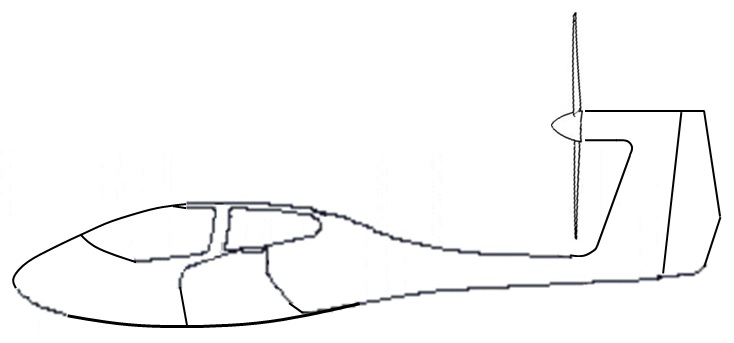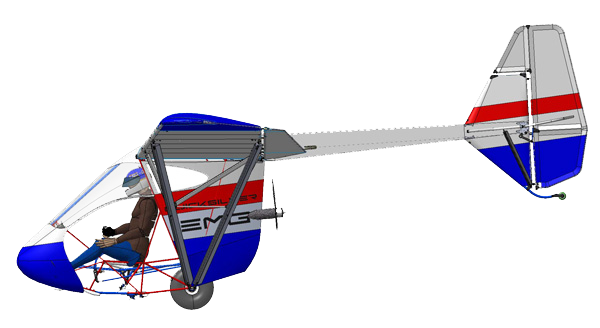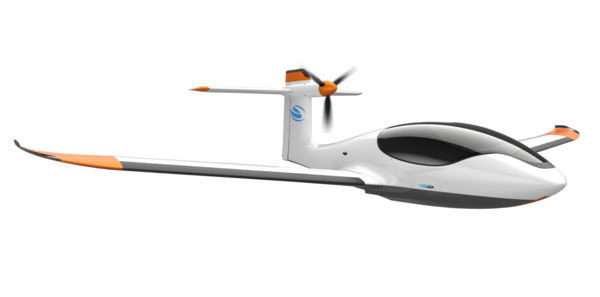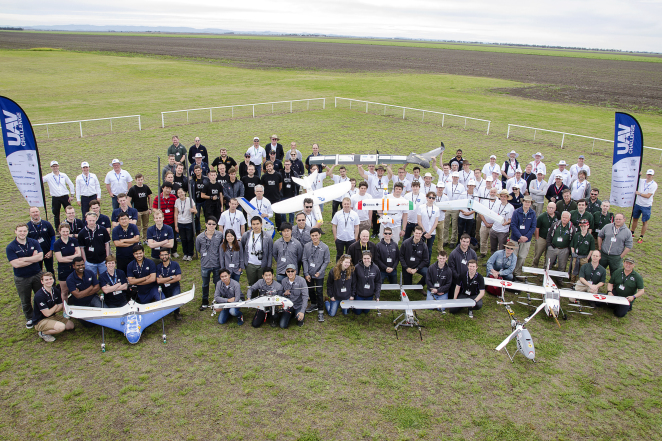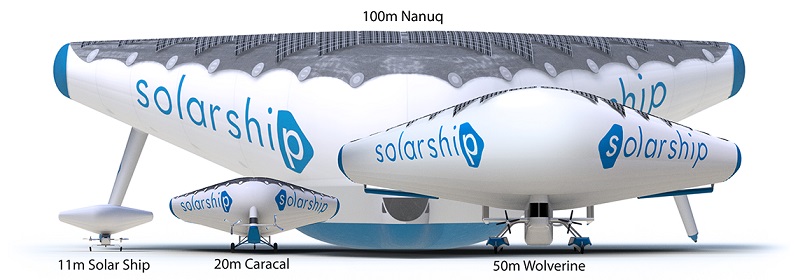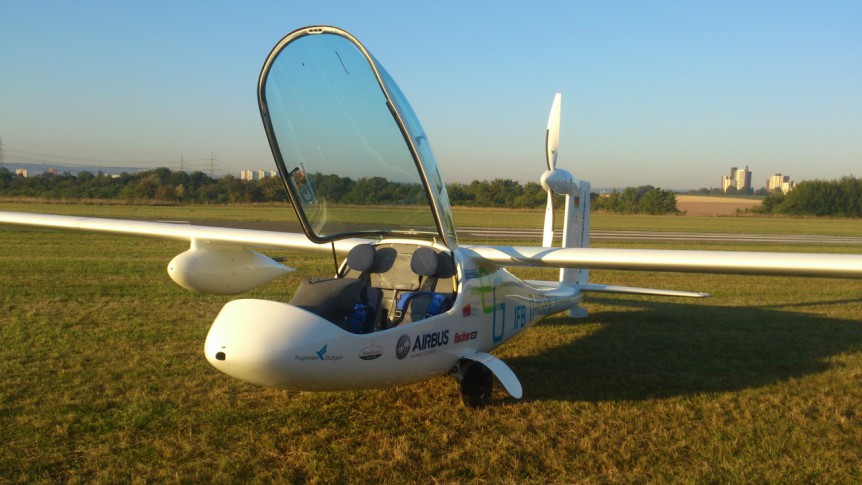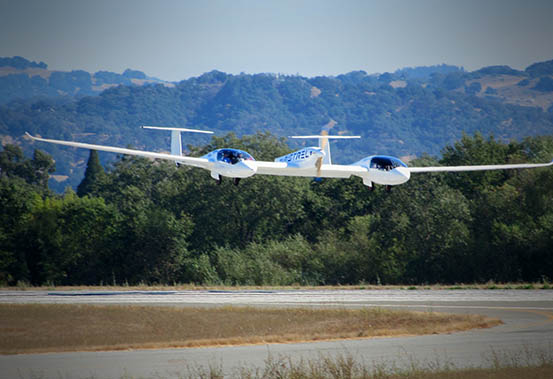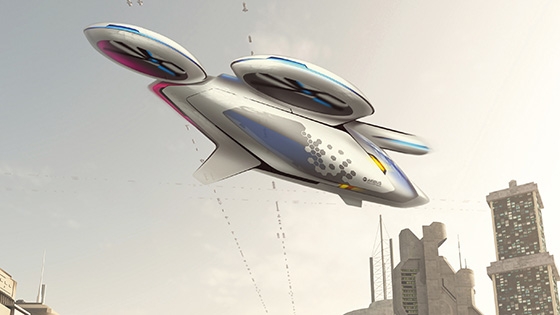A Big Win for Stuttgart Team Dipl-Ing Ingmar Geiß, Deputy Project Leader for e-Genius at the Institute of Aircraft Design at the University of Stuttgart, shared this pleasant news: “I am happy to tell you that our hybrid-electric “ECO4” has won the Berblinger Prize 2016. ECO4 combines an optimized electric airframe with a modern combustion engine generating electricity. This combination leads to an aircraft which cruises at 120 knots and consumes 40 percent less fuel than comparable state-of-the-art airplanes with conventional propulsion. As a further advantage, a small but powerful battery system enables a silent take-off without the combustion engine running, reducing significantly the noise emissions.” The Berblinger Prize Gunter Czisch, mayor of Ulm, presented the 23,000 euro ($24,035 US) prize to the team, which intends to invest the amount “directly into the further development of the airplane.” The prize was founded in recognition of Albrecht Ludwig Berblinger, “the little tailor of Ulm, who tried to cross the river …
A 24-Volt Airplane Motor?
One of the big surprises in last month’s webinar hosted by the EAA and presented by Brian Carpenter of Rainbow Aviation Services/Adventure Aviation was the 24-Volt motor being developed for the EMG-6 ultralight motorglider. High and Low Voltages Many, if not most of the electric motors flying on existing craft are higher voltage units. For sake of an off-handed definition, we’ll divide low and high at below and above 50 Volts, something OSHA delineates in its regulation 29 CFR 1910.303(g)(2)(i), which “generally requires “’live parts of electric equipment operating at 50 volts or more’ to be ‘guarded against accidental contact by use of approved cabinets or other forms of approved enclosures’ or by other specified means.” In its explanation, the Occupational Safety and Health Administration “considers all voltages of 50 volts or above to be hazardous. Electric current, not voltage, passing through the human body causes injury….” And it really doesn’t take much amperage to take a person to the …
Pipistrel, Sino GA Sign Memorandum of Agreement
China has over one billion, four hundred million people. Slovenia has a little over two million. This population disparity has not kept Pipistrel d.o.o. Ajdovscina and Chinese company Sino GA Group Co. from signing a Memorandum of Understanding for a long-term joint-venture in the field of light and general aviation in the regions of China, East Asian countries and the Asian Pacific region. Pipistrel, led by General Manager Ivo Boscarol, has built many airplanes in its 27-year history (including over 800 of its Sinus/Virus series), and earned plaudits for its clean manufacturing and ethical management. It has led in development of electric motorgliders, an electric training aircraft, and a high-performance hybrid cruiser. It won the Green Flight Challenge in 2011 with a battery powered aircraft that managed to cruise at over 100 mph for 200 miles and returned 403.5 passenger miles per gallon. That airframe has been converted to hydrogen power and was flown in September in a 10-minute demonstration …
First motor Test Run for Equator P2
The Equator P2 is a hybrid amphibious two-seater that looks like the future. Under development for a decade, this amateur-built machine looks highly professional, surpassing in form and function many of its factory-built peers. It had its first motor run-up recently, a much-anticipated event that met all expectations. Looking Like the Future, Built in a Garage One can see the garage-built home of the craft in the simple bracing used to hold the tail-mounted motor in place, an example of the truly hand-made nature of the Equator prototype. The rudimentary surroundings fail to show the sophistication of the design, however, including a power system similar to that used on the range-extended e-Genius. Progress over the last nine years has been limited, as with many such projects, by (in Tine Tomazic’s words)”the speed of cash.” As with other such projects, the family car occupies the driveway, the Equator the garage. Tomas Brodreskift designed the craft while serving an internship with Airbus. …
Larry Page’s Flying Car(s)?
A3 backed by Airbus, EHang 184 from China, and Zee from Larry Page (head of Google) – Silicon Valley seems an unlikely source of aeronautical breakthroughs, but several entrepreneurial outings from Airbus, Chinese startups, and Zee.Aero, led by a secretive Larry Page, have interest growing. A pair of recent flights by Zee’s craft in Hollister, California have generated coverage – and speculation. Larry Page’s Two Companies It turns out Page has a second company, Kitty Hawk, taking yet another path toward electrified flying cars with something like a large quadcopter – not unlike the eHang 184. Neither Zee.Aero nor Kitty Hawk is affiliated with Google, both funded out of Page’s largesse. One theory is that his two companies, the first started by noted aerodynamicist Ilan Kroo and the second headed by Sebastian Thrun, will engage in a friendly competition to create the best device for future development. Considering the secrecy, or perhaps because of it, a few recent flights by …
Getting Blood from Outback Joe – the 2016 Outback Challenge
Outback Joe goes through a lot of trauma in his overstuffed life. This literal straw man gets tossed into some remote part of the Australian outback every year and waits for some kind of rescue. This usually comes by air, drones searching for him and taking him medicine, food, water, or some other necessity. That’s the Outback Challenge. One can see a condensed history of the competition from its inception in 2007 to today on Wikipedia, the entry including the different kinds of things Outback Joe needed for a mission to be successful. This year, however, competitors were supposed to bring back a reminder of their visit to Joe – a blood sample – a good trick from an inanimate being who might answer to “Hay!” Richard Glassock, now a Research Fellow at the Institute for Aerospace Technology, the University of Nottingham, describes the vision and how it has grown up. “The competition Rod Walker and I first discussed about …
Solar Ship Sells Four Inflatable Solar Airships
People in remote areas of Africa may find relief coming quickly to disaster zones with Manaf Freighters’ purchase of four Solar Ship aircraft. Solar Ship’s Uniquely Hybrid Form Solar Ship, located in Toronto, Canada, builds solar-powered triangular, blimp-like flying machines that could serve as lifelines to the world’s most remote places. Solar Ships range from an 11-meter wide (it’s hard to call it a wingspan) envelope to a projected 100-meter (328 feet) wide monster that could carry up to 30,000 kilograms (66,000 pounds) for a minimum of 2,000 kilometers (1,240 miles). The blog reported on Solar Ships three years ago, when their few flying examples were testbeds for the possible future development of practical load haulers. Combining buoyancy with aerodynamic lift allows large payloads and great short-field performance, making their craft viable “bush” planes. That the company can now build larger craft will demonstrate their concept to a wider audience. With operations based in Ontario, Canada; Cape Town South Africa; …
e-Genius Flies with a Range Extender
Stuttgart to Barcelona Dipl-Ing* Ingmar Geiß, Deputy Project Manager for e-Genius with the Institute of aeronautical engineering at Stuttgart University shared the news that e-Genius flew with its range extender for the first time on September 15. He notes that while the battery-powered airplane can manage trips up to 300 kilometers (186 miles), the hybrid engine/generator pod will enable flights up to 1,000 kilometers (620 miles). This would equal a trip from Stuttgart to Barcelona, Spain, according to the e-Genius web site. As the school explains, “With [the] e-Genius hybrid most flights of a typical user case can be done in the cost and energy efficient battery mode – for all longer flights the range extender can be used. Generator system control requires no pilot input, everything being done automatically. If the pilot wants to set down at the end of a trip with a certain amount of battery energy on board, e-Genius has an ingenious “look-ahead” feature to modulate …
Dr. Joseph Kallo, DLR See a Hydrogen Future
Speaking at the first annual Sustainable Aviation Symposium at the Sofitel San Francisco Bay on May 6, 2016. Dr. Joseph Kallo focused on hydrogen as a more than potential fuel for future flight. He stressed that H2 fuel development was further along than one would think, and shared several examples to promote that thought. A Busy Man, a Storied Airframe Dr. Kallo is DLR (Deutsches Zentrum für Luft-und Raumfahrt – German Center for Air and SpaceTravel) Coordinator of Electrical Aviation for Germany’s equivalent of NASA, oversees work at the DLR Institute of Engineering Thermodynamics, which has worked with Pipistrel in Slovenia to convert the Green Flight Prize winning Pipistrel G4 to the hydrogen-powered HY4. He’s also Institute Director at the Institute of Energy Conversion and Storage, Ulm University. That group provides expertise on hybridization for the HY4 project. Ulm partners with aircraft designer Pipistrel, fuel cell provider Hydrogenics, and DLR to make the aircraft a reality. H2Fly will operate the …
Airbus’s Aerial Commuter of the Future?
Airbus and its partner Local Motors have just finished a successful design challenge for delivery drones that can carry things like emergency medical supplies to selected destinations. Recent announcements and the release of a patent drawing show Airbus is doing serious work toward delivering humans to their selected destinations in a scaled-up version of such drones. Many brilliant people have tried to combine the benefits of ground and air transport over the years, including Molt Taylor, designer of the rightly famous Aerocars. The example at Seattle’s Museum of Flight causes docents to lower their voices out of respect for the accomplishment. That’s certainly a concept promoted for last decade by Dr. Brien Seeley, head of the Sustainable Aviation Foundation and sponsor for this blog. His AIAA paper on Regional Sky Taxis spells out his hopes for alleviating ground-bound gridlock with aerial alternatives. Recently, Airbus formed a group in California’s Silicon Valley called A3, or A Cubed. The group earned a …

